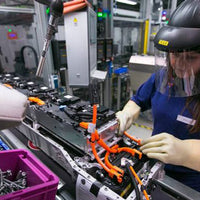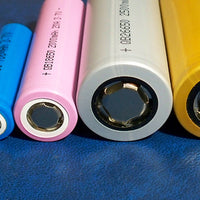The lithium battery is a lithium-ion secondary rechargeable battery, from the appearance, there is a cylindrical steel case, square aluminum case(Prismatic), and soft packaging three, where the soft packaging is the title of polymer, you can see that the polymer is a kind of lithium polymer battery, a lithium battery. In this context, lithium batteries refer exclusively to cylindrical lithium batteries. So which polymer and lithium battery is good, the actual discussion is the polymer and cylindrical lithium battery which is good.
We compare them one by one to try to find out.
1, Material
Lithium batteries use liquid electrolytes, while polymer batteries use gel electrolytes and solid electrolytes inside them. Domestic polymers can not be called polymers, can not solid, called no flowable liquid is more accurate.
This is an off-topic remark, not to be covered here.
2, Package mode and appearance
Polymers are packaged with aluminum film and can be customized in shape, as thick and thin as they can be. Lithium batteries are packaged in steel cases and are most cylindrical, the most common being 18650, which is 18mm in diameter and 65mm in height. The shape is fixed.
Cannot change at will.
3, Security
There is no flowing liquid inside the polymer and no leakage. When the internal temperature is very high, the aluminum film shell is also just flat gas or drum pack, will not explode. The safety is higher than that of lithium batteries. Of course, this is not absolute, if the polymer battery instantaneous current is large enough to short-circuit, the battery self-ignition or explosion will also occur.
The explosion of Samsung's cell phone batteries a few years ago, and this year's recall of laptops by Lenovo due to battery defects, are the same problems.
4, Energy density
The average 18650 battery capacity can be about 2200mAh, so that the energy density is about 500Wh/L, while the energy density of polymer batteries can be mass-produced at this stage to close to 600Wh/L.
5, Cell voltage
Because polymer batteries use polymer materials, can be made in the core multi-layer combination to achieve high voltage, and lithium battery core nominal capacity is 3.6V, to achieve high voltage in practical use, it is necessary to series multiple cores together to form an ideal high voltage working platform.
Thus, it can be seen that polymers and lithium batteries which good, it seems that polymers have the advantage.
But there is a reasonable, and they certainly have an irreplaceable side in different aspects.
Let's look at the last item:
6, Price
Polymers of the same energy are generally more expensive than lithium batteries.
But this cannot be said to be a disadvantage of polymers.
At present, in the field of consumer electronics, such as notebooks, mobile power, etc., more and more use of polymers to replace lithium batteries. In a small battery compartment, to achieve the maximum energy density in a limited space, polymers are still needed.
Because of the fixed shape of the lithium battery, it cannot be customized with the customer's design. But polymer batteries don't have a uniform standard size, which in turn is a disadvantage in some ways.
Tesla Motors uses a battery made up of more than 7,000 18650s that are strung in parallel, plus a power control system. It seems that polymers and lithium batteries which are good, good or bad, or depending on the specific situation, can not give a single conclusion.








0 comments